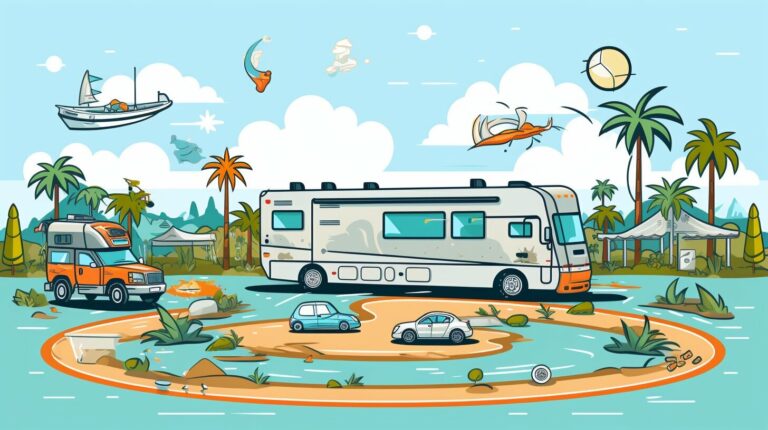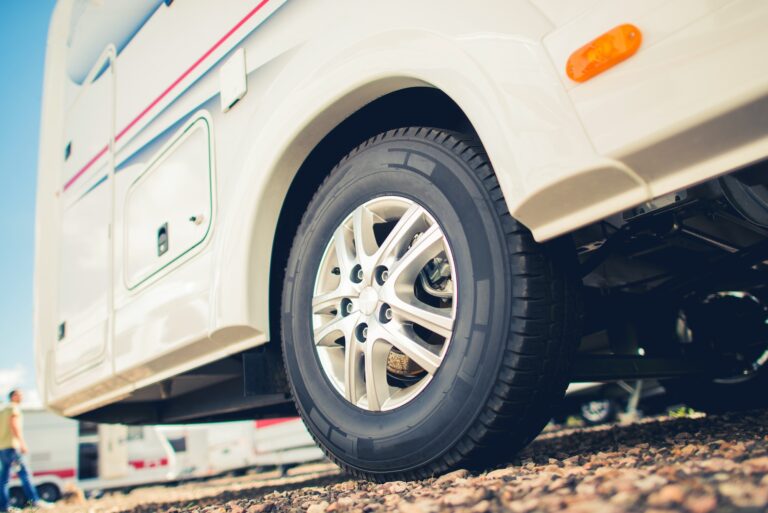When thinking about purchasing your first RV (recreational vehicle), the sheer number of options on the market can be overwhelming. One of the first decisions you’ll need to make is which class of RV is right for you. The most common types are Class A, B, and C motorhomes. Each class offers unique features and benefits, as well as certain drawbacks that you should take into consideration. In this guide, we’ll explore the pros and cons of Class A, B, and C motorhomes to help you make an informed decision.
Class A Motorhomes
Class A motorhomes are the largest and most luxurious of the RV classes. These are what many people picture when they think of a motorhome. They often resemble buses in design and can range from 20 to 45 feet in length.
Pros of Class A Motorhomes:
- Size and Comfort: Class A motorhomes provide the most living space, often including a master bedroom, full bathroom, and well-equipped kitchen. Many have slide-out sections that can further expand the living area when parked. This makes them ideal for long trips, full-time RV living, or trips with larger families or groups.
- Amenities: Class A motorhomes often come with a wide range of luxury amenities such as full-sized appliances, central heating and air conditioning, and entertainment centers.
- Storage: These motorhomes typically have abundant storage capacity, both inside and in basement storage compartments outside.
Cons of Class A Motorhomes:
- Cost: Class A motorhomes are the most expensive RV class, both in terms of initial purchase price and ongoing maintenance costs.
- Fuel Efficiency: Given their size and weight, Class A motorhomes tend to be the least fuel-efficient RV class.
- Difficulty to Maneuver: Due to their size, Class A motorhomes can be difficult to drive and park, particularly in tight spaces or urban areas. Some campgrounds may also have size restrictions that can limit where you can stay.
Class B Motorhomes
Class B motorhomes, also known as camper vans, are the smallest and most compact class. These motorhomes are built on a van chassis and typically range from 16 to 22 feet in length.
Pros of Class B Motorhomes:
- Ease of Maneuverability: Their compact size makes Class B motorhomes the easiest to drive and maneuver. They can be parked in standard parking spaces and can easily navigate urban environments.
- Fuel Efficiency: Class B motorhomes are generally the most fuel-efficient RV class, which can help offset travel costs.
- Versatility: Due to their size, Class B motorhomes can be used as a primary vehicle when not camping, further increasing their value.
Cons of Class B Motorhomes:
- Limited Space: The small size of Class B motorhomes limits both living and storage space. They can comfortably accommodate one or two people but might be cramped for larger groups.
- Limited Amenities: While modern Class B motorhomes are well-equipped, they typically can’t match the luxury features or full-sized appliances of larger motorhomes.
- Cost: Despite being smaller, Class B motorhomes can be surprisingly expensive due to their efficient use of space and modern designs. They also tend to hold their value well, which can make finding a budget-friendly used option challenging.
Class C Motorhomes
Class C motorhomes fall between Class A and B in size, usually ranging from 20 to 33 feet in length. They are built on a truck or van chassis with an extra over-cab area, which often houses a sleeping space.
Pros of Class C Motorhomes:
- Balance of Size and Amenities: Class C motorhomes offer a good balance between the space and amenities of a Class A and the maneuverability and efficiency of a Class B.
- Sleeping Capacity: The over-cab sleeping area provides additional space and makes Class C motorhomes a good option for families or larger groups.
- Cost: Class C motorhomes are typically more affordable than Class A motorhomes and often less expensive than Class B motorhomes, making them a good middle-of-the-road option.
Cons of Class C Motorhomes:
- Maneuverability: While more manageable than Class A motorhomes, Class C motorhomes can still be challenging to drive and park, especially for beginners.
- Fuel Efficiency: While better than Class A motorhomes, the fuel efficiency of Class C motorhomes can’t match that of Class B motorhomes.
- Noise: The over-cab area can be noisy when driving due to wind resistance, which can be a downside for some travelers.
Conclusion
Choosing the right RV class is a crucial first step in your RV buying journey. Remember, the best RV for you depends on your unique needs, budget, and travelplans. Class A motorhomes offer supreme luxury and space but come with higher costs and can be challenging to maneuver. Class B motorhomes provide the best fuel efficiency and are easy to drive, but their small size might not suit everyone. Class C motorhomes offer a balance between size and amenities, usually at a more affordable price point.
Before making a decision, visit some RV dealerships or shows to tour different models and get a feel for the space and features. Asking current RV owners about their experiences can also provide valuable insight. Regardless of the class you choose, owning an RV can open up a world of travel possibilities and adventures.
Remember, the journey is more important than the destination. As a first-time RV buyer, take your time to research, ask questions, and find the motorhome that feels like the perfect fit for your traveling dreams. Happy RVing!






